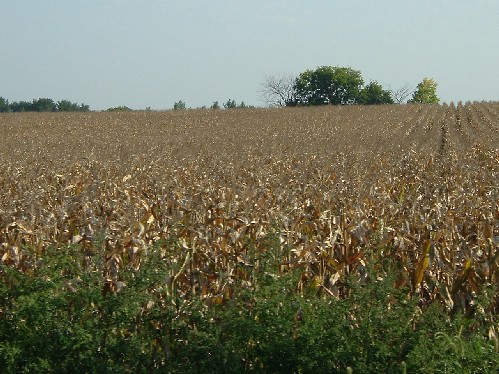
Our primary natural resources are the sun, carbon dioxide, land and water. It is possible that these natural resources and the appropriate conversion technologies will enable us to move from the present fossil resource-based economy to a plant-based economy with the sun being the major source of energy. The era of a chemical industry dependent on fossil resources such as mineral oil, gas and coal will gradually come to an end in the course of next 30-35 years or so. Two main reasons for this prediction are:
(1) The stocks of fossil resources are finite. First of all, mineral oil stocks will be exhausted around 2050 if we continue our present way of life. A recent article by Campbell and Laherrère tells us that natural gas will last for some 75 years and coal will last the longest (> 200 years).
(2) From the environmental point of view, all kinds of pollution from global warming to acid rain, from smog to ground water pollution, have been linked to the use of fossil fuels.
Hence, we are living in the threshold of a new era in chemistry.

The fundamental questions arising from statistical data are whether it is at all possible without fossil resources, to produce sufficient food (1st priority), organic materials (2nd priority) and energy (3rd priority) to allow 9–10 billion people a decent life. The sustained growth scenario requires switching from fossil fuel to renewable forms of energy and organic raw materials. Renewable forms of energy are solar energy, energy based on wind-driven windmill parks, energy based on biomass, energy based on water power (hydroelectric, tidal, wave), and geothermal energy.
One of the key alternatives to fossil fuel is biomass. A basic question here is: ‘Is it possible to harvest sufficient biomass, after deduction of the food needs of a world population of 10 billion, to produce the required amount of organic raw materials?’ The answer to this question depends mainly photosynthesis yield and the amount of agricultural land available to produce biomass.
A biomass can be thought of as a plant capable of generating power. This plant catches light and CO2 above ground and water and minerals below ground. Combine intake of all these essentials enables the plant to produce biomass. Using photosynthesis, a plant can produce carbohydrates depending upon the plant type.
The maximum theoretical yield of photosynthesis, related to white light, is 6.6 %. The maximum values reached in practice are 2.4 to 3.2% for C4 plants (sugar cane, sorghum, corn, miscanthus) and 1.7 to 1.9% for C3 plants (sugar beet, eucalyptus). On average, the yield of photosynthesis is around 0.5%. Nevertheless, under favorable circumstances, 30–70 tons of dry biomass can be harvested per hectare per annum. It is anticipated that plant breeding and genetic modification of plants will further increase the yields of biomass per hectare (and the biomass composition), though the growth will be less fast than before.
We can explore many different ways to utilize biomass to produce organic compound and materials. One way is to produce the organic chemicals directly from plants by means of plant biotechnology including (bio) chemical modification. There most important conversion technologies are gasification, hydrothermolysis and fermentation to ethanol. A good example of biomass processing is its fermentation to ethanol. By fermentation of biomass (sugars, grain, cellulose, etc.) with yeast, a 6.5–11% ethanol in water solution is formed from which 95 or 100% ethanol can be obtained by distillation.
Researchers have concluded that biomass provides a substantial contribution to the energy needs of 2040 and the remaining energy, leaving aside fossil fuel, has to come from solar energy and other forms of renewable resources like water and wind. They have also enumerated a number of situations that improve biomass availability; the key aspects require building better infrastructure for biomass processing, improving quality of soil, and reducing climate change.
In conclusion, the state of affairs in 2040 with higher average standards of living and less of environmental pollution seems technologically possible without the widespread use of fossil resources. The technological approach requires, amongst other things, the massive development and application of solar energy and biomass for food, organic raw materials, and energy. Experts on this topic expect that in the next 50 years biomass will not only remain the main raw material for food production but will also become again a major raw material for the organo-chemical industry.

Contributed by Satyam K Bhuyan, Ames, IA
- Log in to post comments